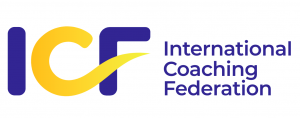What is ‘third generation NLP’.

NLP is now in its third decade as a field of study and has evolved considerably since its beginnings in the mid 1970s. As a third generation of NLP developers, trainers and practitioners move into the world, it is also time to acknowledge a third generation of NLP – an extension of the field and incorporate this in all of our work.
In the beginning – ‘ first generation’ NLP – we had the tools and models that Bandler and Grinder derived from their study of innovative and effective therapists. The techniques and skills that were created were mainly focused on problem solving at behaviour and capability levels with individuals. These included the meta model, anchoring, eye accessing cues, predicates, 6 step reframing, etc.These early applications of NLP were all applied one-on-one, with the focus almost entirely on the individual and so works at the levels of environment, behaviour and capability. NLP was considered something which one “did to other people.” This led to some NLP applications as seeming to be manipulative when used in non-therapeutic contexts. It was very concerned with the lower levels of Spiral Dynamics and the areas of protection, control, conformism and achievement or success factors. Most of the first generation tools and techniques were focused on problem solving at level of behaviour and capabilities.
Second generation NLP emerged in the mid to late 1980’s and emphasised the relationship between self and others. The areas of application widened to include business, health, education and sales. Also the tools expanded to include higher level issues which were related to values, beliefs and ‘meta programmes’ and integrated distinctions like time lines, submodalities and perceptual positions into new formats like Re-imprinting and the Swish Pattern. Second generation NLP is very concerned with the ‘why’ questions and was a period of exploration focusing on caring and sharing with others, relationship and self development.
Third generation NLP has been developing since the 1990s. Understanding and exploring Third Generation NLP involves looking back to the origin and legacy of NLP as well as looking to future developments. The applications of third generation NLP are generative, systemic and focused at even higher levels of learning, interaction and development—including those relating to identity, vision and mission. This is very much about an inter-connected view of working, living and the environment and the experience of a global thinking culture. It is at the top of the Spiral Dynamics model and is poised to help the world prepare for news ways of thinking. Third generation NLP emphasizes whole system change and can be applied to organisational and cultural development as well as to individuals and teams. The techniques of third generation NLP are “field based,” incorporating principles of self-organization, archetypes and what is known as “fourth position”—a whole system perspective. They include; acting with alignment and integrity, ‘sponsoring’ and supporting others, resolving complicated problems, developing multi-level perspectives and so enabling and creating dynamic and ecological change. The assumption of third generation NLP is that the wisdom needed for change is already in the system and can be discovered and released by creating the appropriate context. Robert Dilts quotes Isaac Newton as having said, “If I have been able to see farther than others, it is because I have been standing on the shoulders of giants.”






[…] individual change. By Embracing the powerful connection between psyche, body, and climate, Third Generation NLP offers Imaginative Methodologies like Self-improvement, Consistency, and change on a surface […]